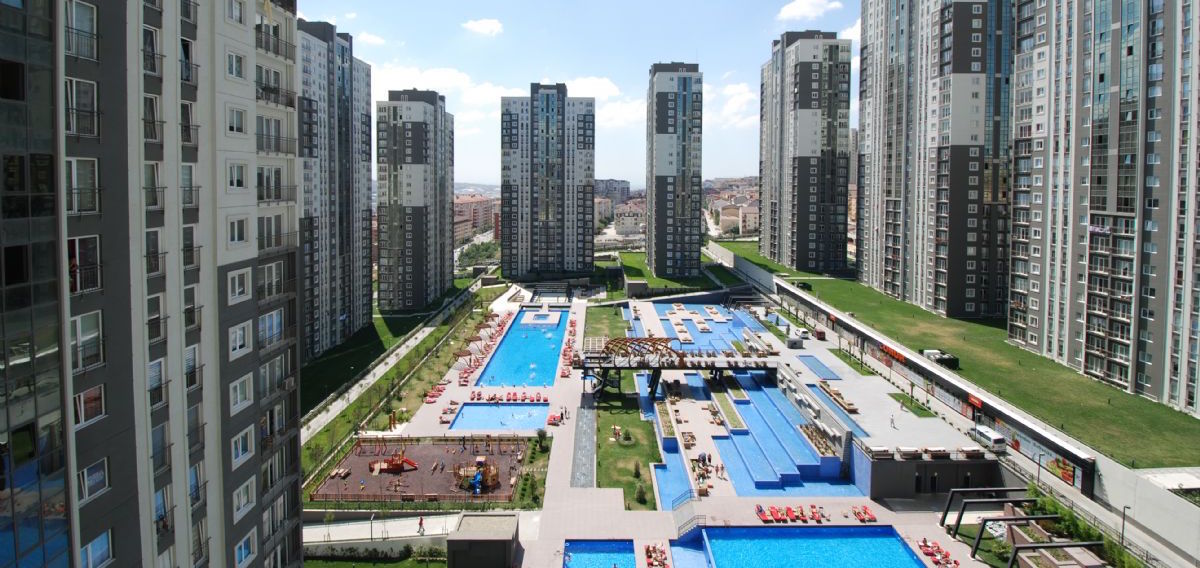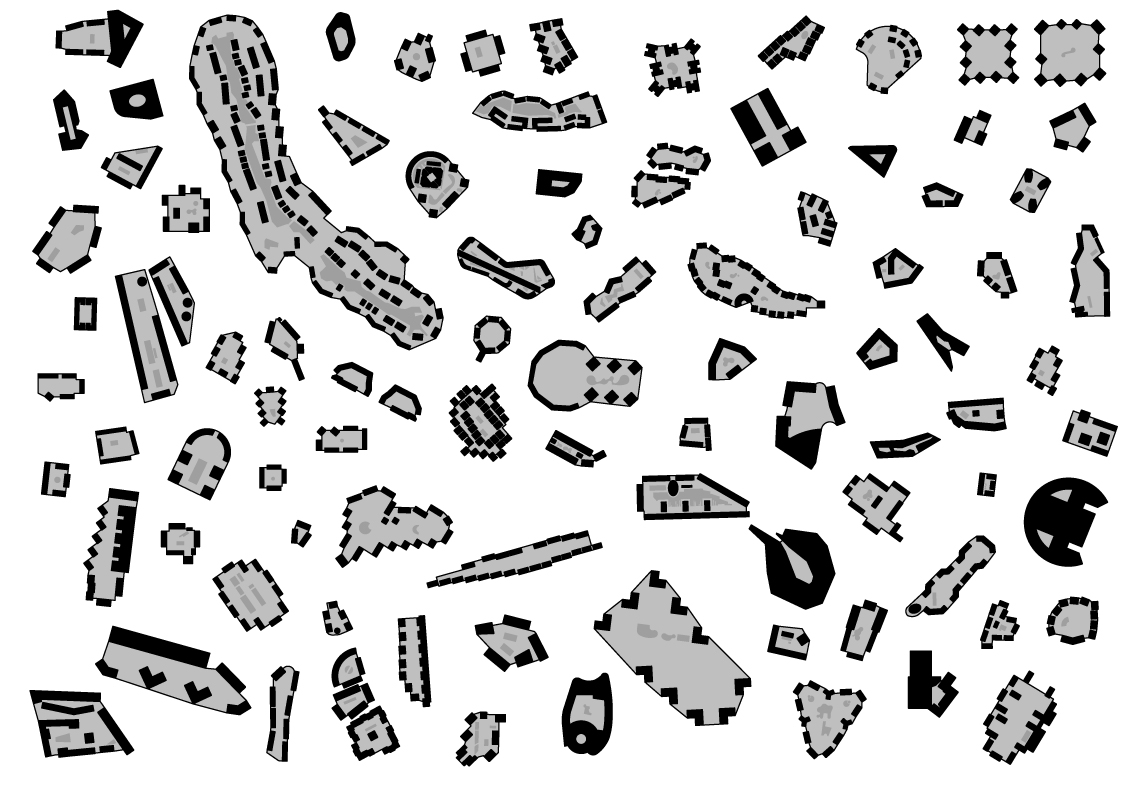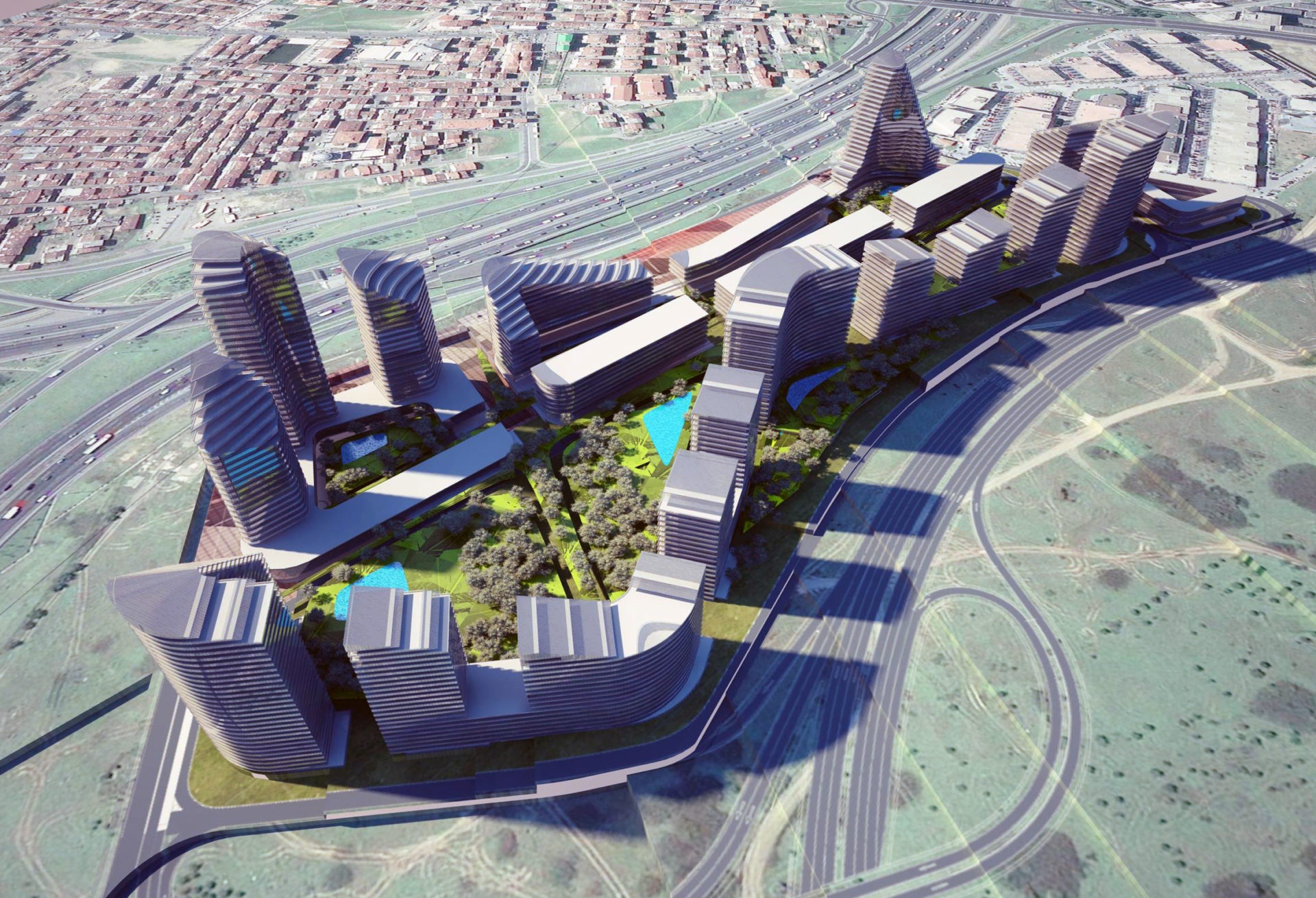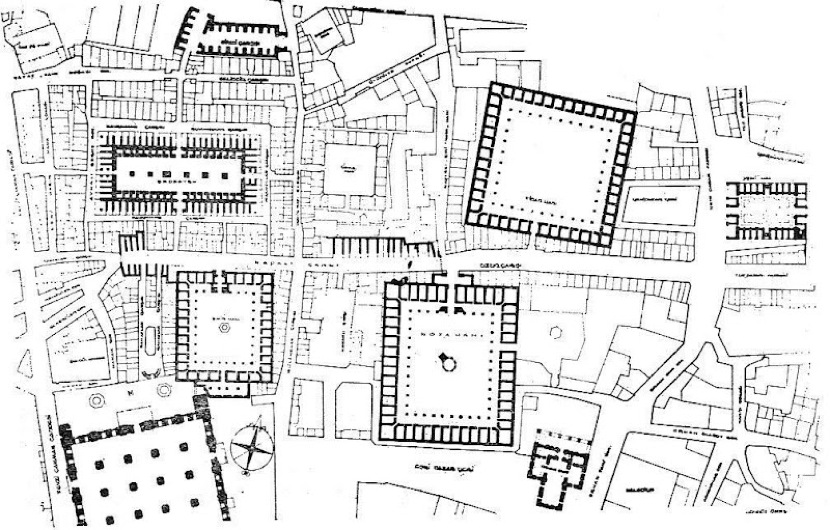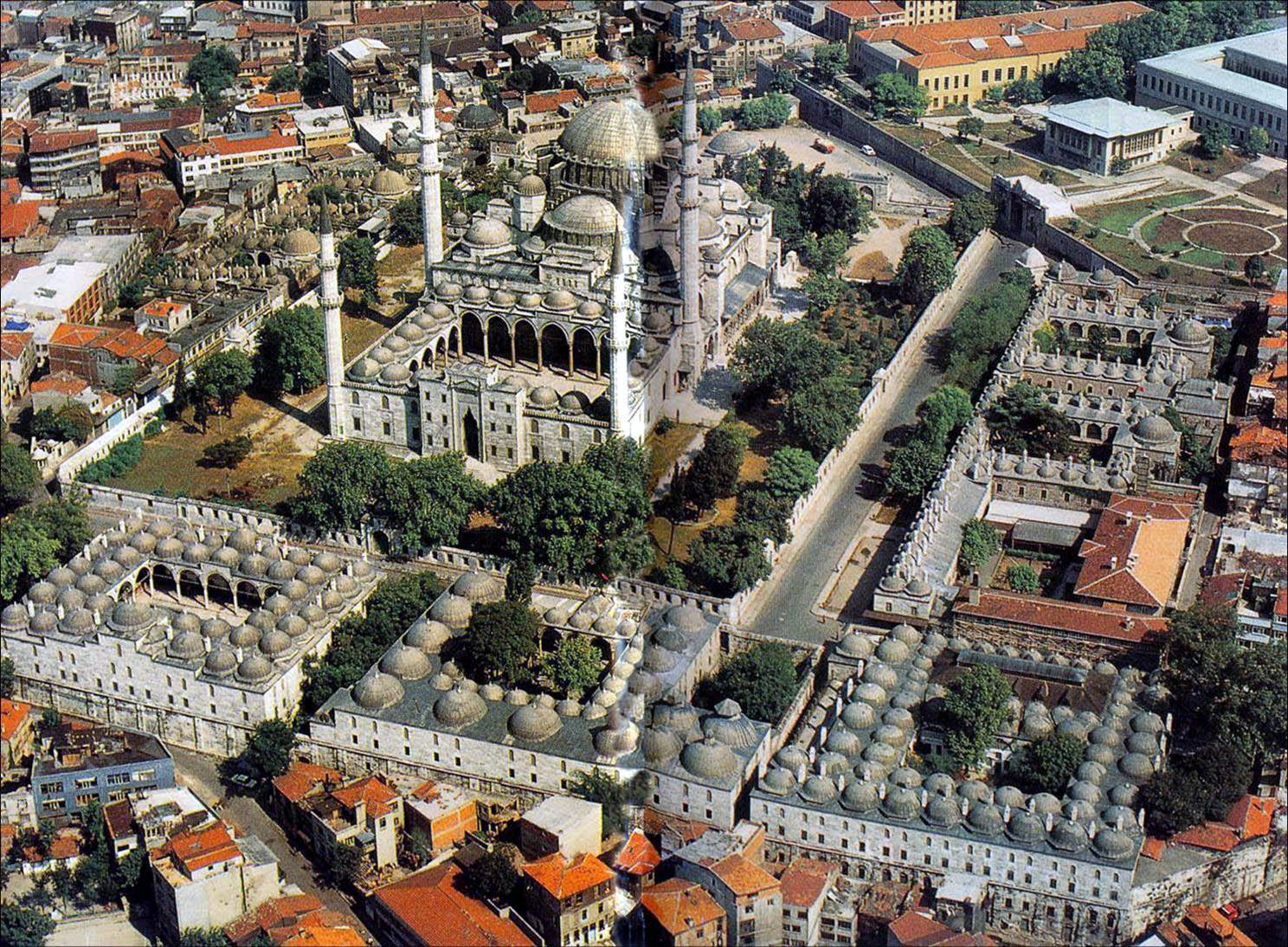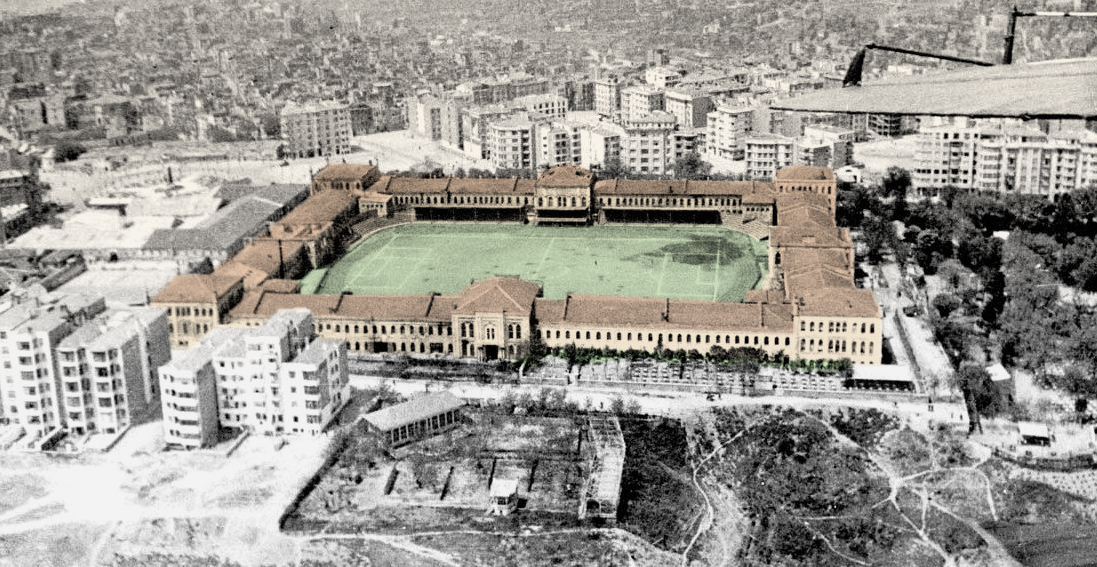Plate glass and concrete frames, the liberating pillars of the heroic modernists, twist and contort into medieval fortresses. If the project of the modern city has been to erase borders, the latest artifacts of IstanbulвҖҷs transformation betray their avant-garde appearance: gargantuan buildings surround a protected garden, detached from the city by their autonomy. Recalling the walled spaces of the Ottoman Era, this Enclosed Paradise is emerging as a new, universally applied, architectural typology. It comes, however, at the inevitable cost of urban plurality.
Ironically, these isolated enclaves are sprouting up at a time when Istanbul is transforming into a metropolis without limits. New roads, bridges, subways, tunnels, airports and canals are being cut through tightly-knit claustrophobic neighborhoods, bulldozing the barriers to neoliberal exchange. Gated communities and other introverted spaces dutifully maintain order amidst this urban maelstrom, walled off from the discord of an endless and rapidly transforming city.
Not Gated and not a Community
Over 1,000 gated communities have been built in Istanbul in the new millennium, taking on various forms and marketed for their safety and social facilities. But in reality they are not communities and nor are they even particularly gated. The cityвҖҷs crime rate is equally low inside and outside such enclaves. Marketed to wealthy Turks as well as to Arabs, Russians, and Westerners, there is very little holding the community together besides a common tax band. Residents rarely even know their neighbors. Behind the verdant renderings of happy gardens and fountains, exclusivity is the hidden agenda, one that manifests itself in a Dubai-like architecture seemingly calculated for maximum alienation.
You can find American-style fenced-in suburbs along IstanbulвҖҷs periphery, but gated communities have evolved into a new type as they have increasingly begun to encroach upon the urban core. Smaller parcel sizes and higher FAR (Floor-Area Ratio) result in enclaves that are compact, tall, and completely at odds with their immediate surroundings. What began as loose sprawl congeals into a thick, concentrated mass, where hard edges abound. The Turkish word for Gated Community is site, from the French citГ©, and they generally resemble the French highrises of the same name, rather than American tract housing. Towers and slabs stand shoulder to shoulder, dancing in a circle around the gardens they surround.
Beyond these residential communities, the enclosed garden has become the modus operandi for architects and developers regardless of program: schools, hotels, offices, and government facilities, all follow a similar principle. It is a methodology that utterly negates context: in a rapidly transforming sea of anomie, introversion is apparently the only way to make space.
Multi-use complexes are frequently marketed as cities unto themselves. Like prepackaged TV dinners, they contain all the essential ingredients of a deliciously unhealthy urban meal, but invariably lack the home-cooked delights of an incremental urban growth. One recently completed high-profile project in downtown Istanbul, the Zorlu Center, boasts shops, offices, residences, a hotel, and a theater for the performing arts. Despite its hermetic enclosure, the architects somehow refer to the courtyard as a вҖңpublic spaceвҖқ and a вҖңtown square.вҖқ Surrounded by highways, the easiest way to reach the complex is by an underground tunnel that connects to the metro system: modern infrastructure links isolated architectural forms, while flagrantly omitting the free-roaming pedestrianвҖҷs role in the production of truly public space.
How to Make an Enclosed Paradise:
- Raze a blighted industrial site or neighborhood close to the city center, preferably along a new highway or metro line.
- Build an access road around the perimeter. Like a castle moat, this isolates your project from context and gives distance for height setbacks.
- Fill the offset parcel with a base. This plinth elevates the garden while providing parking underneath.
- Arrange towers and blocks along the borders of the site, maximizing the area of the captured central garden.
- Stand out from your neighbors with shiny materials.
- Market the project with a name that sounds like a car, i.e. ‘Innovia’, or ‘Quasar’.
The Inhabited Wall
Fences and gates are unnecessary in this typology, as the buildings themselves form an inhabited wall around the garden. Like a scaled-up abstraction of the four-walled KГјlliye, Madrassa, and Caravanserai typologies of historic Anatolia and Mesopotamia, the private dwelling forms the border of the central void, a simulation of collective settlement. Ideally, the architecture gains its meaning in its exclusivity: a border that separates members from non-members, believers from non-believers, citizens from pagans (from their Latin roots, вҖңcity dwellersвҖқ and вҖңcountry-dwellers,вҖқ respectively.)
These walled spaces played an important role in IstanbulвҖҷs history. Following the Ottoman conquest of then Constantinople in 1453, the Sultans constructed grand monuments on top of old Byzantine plazas and forums. These mosques and KГјlliyes (multi-functional complexes) replaced urban squares as the civic realm of the city and the nuclei of urban development. A relaxed building code transformed the gridded, porticoed example of Roman urban management into an organic network of cul-de-sacs; yet public space was well-ordered within these monumental enclosures. From the domestic garden, to the local mosque, to a districtвҖҷs central KГјlliye, Ottoman life was often framed by singular pieces of architecture. As opposed to our binary understanding of inside and outside or private and public, social relationships were defined by the walls that form a community.
A Continuing Conflict
The struggle between the urban and the architectural has been acted out across IstanbulвҖҷs long history. In the Tanzimat (reform) Period of the 1800вҖҷs, European architects and planners reintroduced the grid and the square to the Ottoman capital. Frequent fires created new opportunities to rationalize the cityвҖҷs parcel plan, and resulted in tighter urban codes for building materials and setbacks. In the early Turkish Republic of the 1920вҖҷs and 1930вҖҷs, French Urban Planner Henri Proust cut through Istanbul with boulevards, squares and parks, a sort of Hausmannisation of the ancient city.
In one of these interventions, Proust demolished an Ottoman military barracks to make Gezi Park, now world famous as the stage for the Gezi Park protests that rocked Turkey in 2013. Outcry erupted when plans emerged to resurrect the historic barracks as a mall, hotel, and/or other program of neoliberal excess at the cost of green space. As part of a large-scale tunnel project through Taksim Square, the tag-team of infrastructure and architecture ambushed urban space. The barracks (literally a caravanserai, or вҖңhouse of the armyвҖқ in Persian) would not have actually destroyed the park, but rather it would have enclosed it. As if prompted by agoraphobia, the government sought to capture space again with the inhabited wall. Behind all the struggles between free speech and authoritarianism, lay the conflict between a universal cosmopolis and a walled paradise.
A Post-Urban Era?
In the case of Gezi Park and elsewhere, Ottoman heritage is used as a means of drumming-up consensus around controversial projects. The economically liberal, religiously conservative AKP government has opened up Turkey to the global economy, and opened up Istanbul to new development with its infrastructural megaprojects. Far from traditional Islamic urbanism, their city is one of continent-connecting-bridges, escalators and mobile broadband. But in the absence of an urban political structure capable of regulating public space, Istanbul becomes an archipelago of framed Edens.
This might very well be the future of all cities. As city walls and state boundaries erode under late capitalism, the walls are only rebuilt at a smaller scale to maintain immunity from the chaos outside. What was once traversable space becomes fragmented. Large-scale architecture, now in an alliance with infrastructure, has defeated the notion of urban space.
